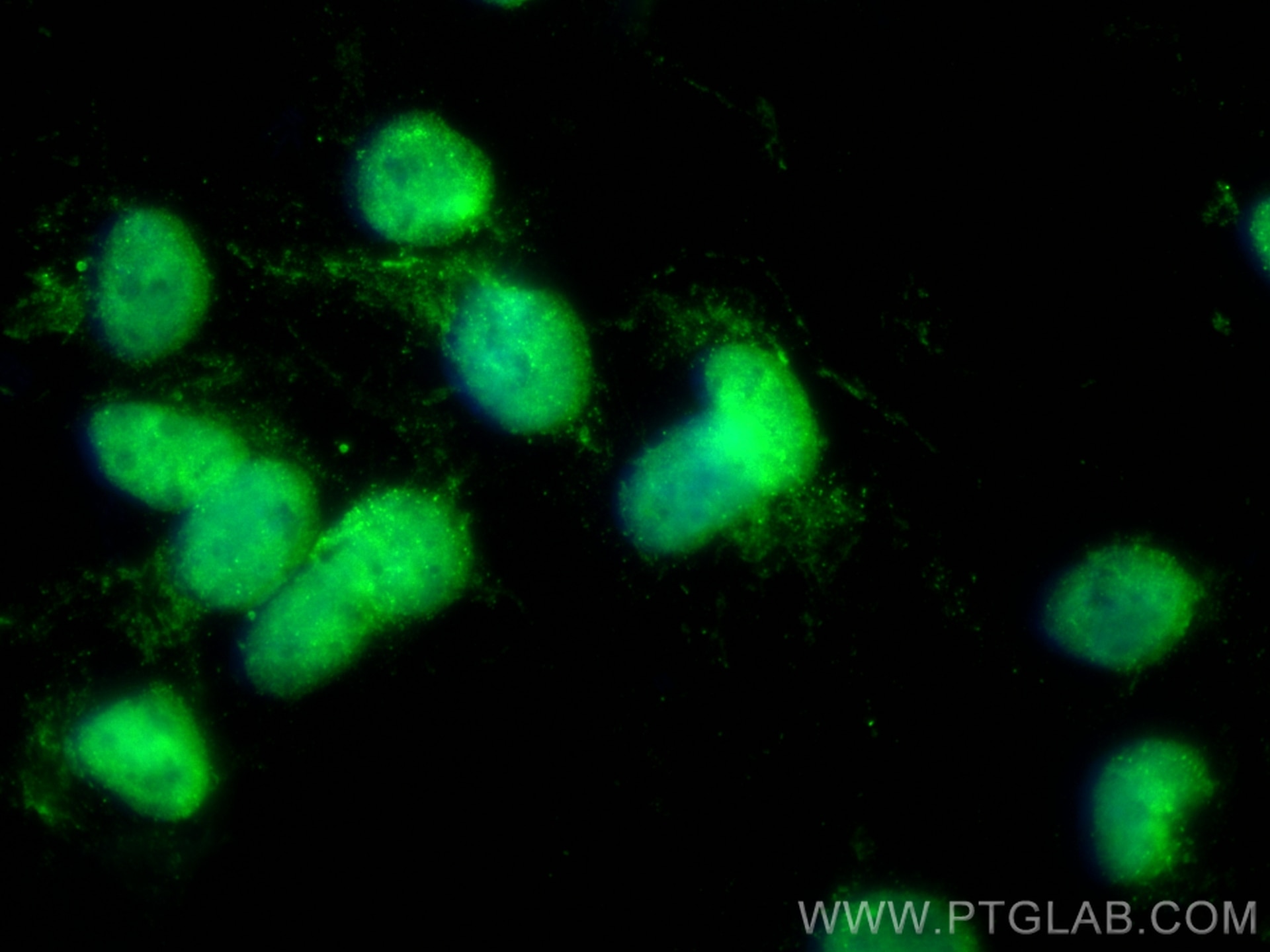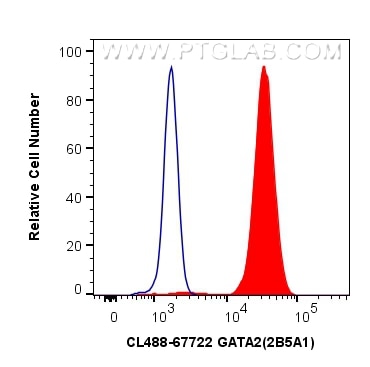GATA2 Monoklonaler Antikörper
GATA2 Monoklonal Antikörper für IF/ICC, FC (Intra)
Wirt / Isotyp
Maus / IgG1
Getestete Reaktivität
human, Maus
Anwendung
IF/ICC, FC (Intra)
Konjugation
CoraLite® Plus 488 Fluorescent Dye
CloneNo.
2B5A1
Kat-Nr. : CL488-67722
Synonyme
Geprüfte Anwendungen
| Erfolgreiche Detektion in IF/ICC | SH-SY5Y-Zellen |
| Erfolgreiche Detektion in FC (Intra) | K-562-Zellen |
Empfohlene Verdünnung
| Anwendung | Verdünnung |
|---|---|
| Immunfluoreszenz (IF)/ICC | IF/ICC : 1:50-1:500 |
| Durchflusszytometrie (FC) (INTRA) | FC (INTRA) : 0.40 ug per 10^6 cells in a 100 µl suspension |
| It is recommended that this reagent should be titrated in each testing system to obtain optimal results. | |
| Sample-dependent, check data in validation data gallery | |
Produktinformation
CL488-67722 bindet in IF/ICC, FC (Intra) GATA2 und zeigt Reaktivität mit human, Maus
| Getestete Reaktivität | human, Maus |
| Wirt / Isotyp | Maus / IgG1 |
| Klonalität | Monoklonal |
| Typ | Antikörper |
| Immunogen | GATA2 fusion protein Ag1557 |
| Vollständiger Name | GATA binding protein 2 |
| Beobachtetes Molekulargewicht | 50 kDa |
| GenBank-Zugangsnummer | BC018988 |
| Gene symbol | GATA2 |
| Gene ID (NCBI) | 2624 |
| Konjugation | CoraLite® Plus 488 Fluorescent Dye |
| Excitation/Emission maxima wavelengths | 493 nm / 522 nm |
| Form | Liquid |
| Reinigungsmethode | Protein-G-Reinigung |
| Lagerungspuffer | PBS with 50% glycerol, 0.05% Proclin300, 0.5% BSA |
| Lagerungsbedingungen | Bei -20°C lagern. Vor Licht schützen. Nach dem Versand ein Jahr stabil. Aliquotieren ist bei -20oC Lagerung nicht notwendig. 20ul Größen enthalten 0,1% BSA. |
Hintergrundinformationen
GATA2 is a member of GATA family of transcription factors that contains zinc fingers in DNA binding domain. GATA2 acts as a transcriptinal activator that regulates endothelin-1 expression in endothelial cells. Together with GATA3, GATA2 regulates adipocyte differentiation through molecular control of the preadpocyte-adipocyte transition. It also affect the activity of Rho inhibitor p190RhoGAP that controls capillary network formation in vitro and retinal angiogenesis in vivo.
Protokolle
| PRODUKTSPEZIFISCHE PROTOKOLLE | |
|---|---|
| IF protocol for CL Plus 488 GATA2 antibody CL488-67722 | Protokoll herunterladen |
| FC protocol for CL Plus 488 GATA2 antibody CL488-67722 | Download protocol |
| STANDARD-PROTOKOLLE | |
|---|---|
| Klicken Sie hier, um unsere Standardprotokolle anzuzeigen |



